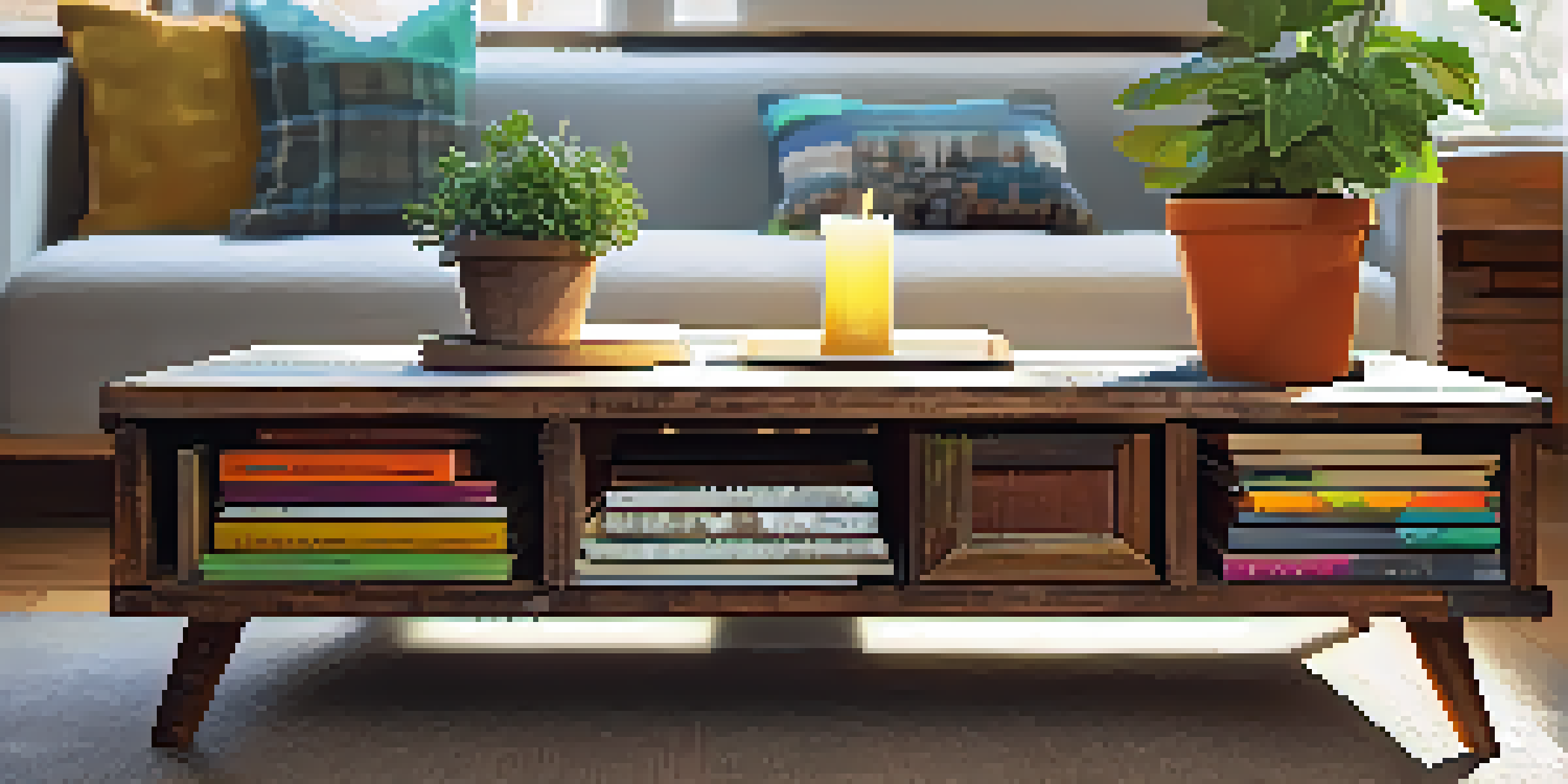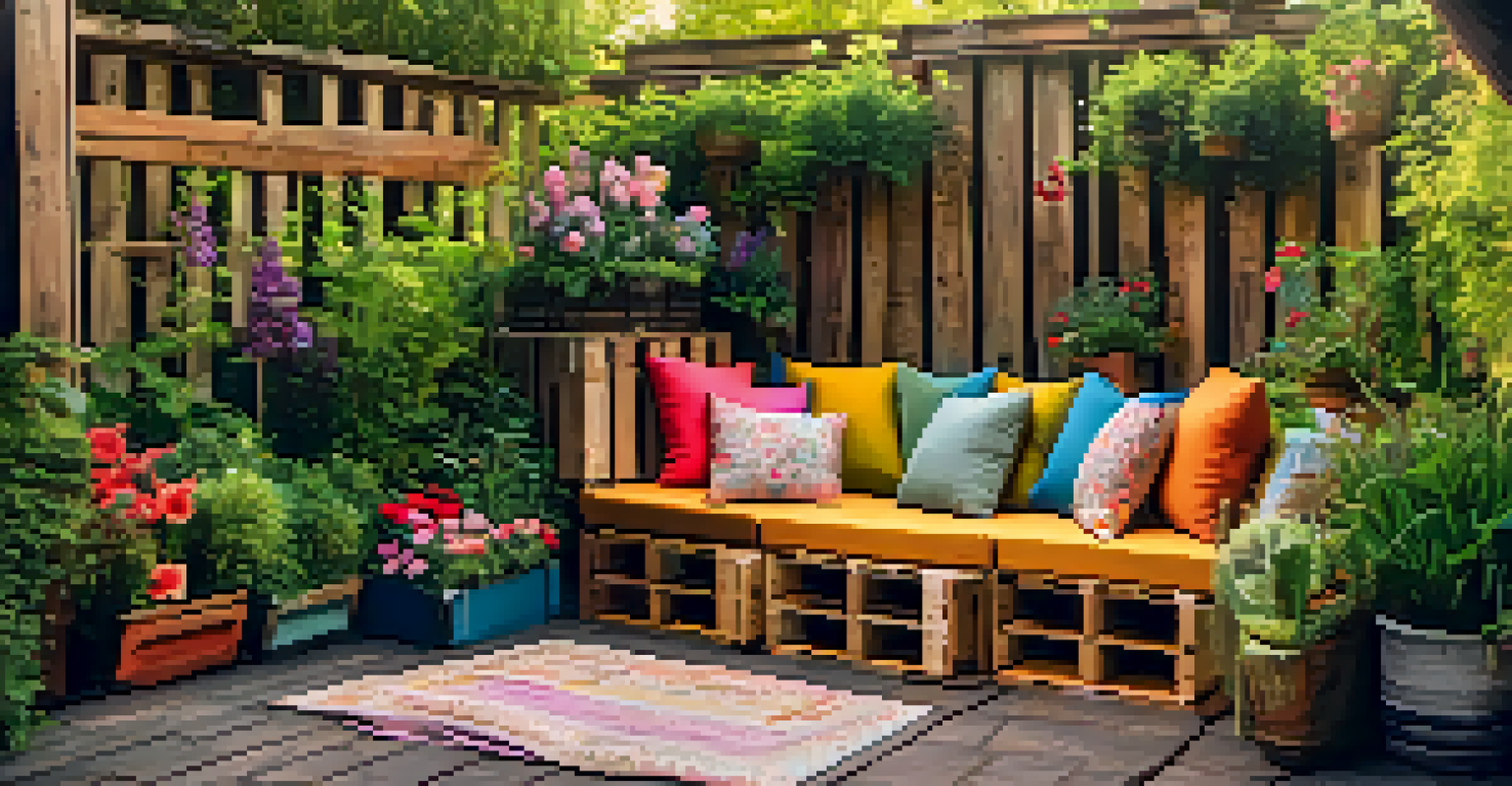The Importance of Upcycling in Home Renovation Projects

What is Upcycling and Why Does It Matter?
Upcycling is the creative process of transforming old or discarded materials into new, useful products. Unlike recycling, which breaks down materials to create something new, upcycling gives items a second life in their existing form. This practice not only reduces waste but also encourages creativity in home renovation projects.
The greatest threat to our planet is the belief that someone else will save it.
Understanding the significance of upcycling is crucial, especially in today’s world where sustainability is a pressing concern. By choosing to upcycle, homeowners can minimize their environmental footprint while adding unique character to their spaces. It’s a win-win: good for the planet and great for personal expression.
Furthermore, upcycling can often be more cost-effective than purchasing new materials. With a little ingenuity, you can transform what would otherwise be waste into beautiful, functional pieces for your home.
Benefits of Upcycling in Home Renovation
One of the primary benefits of upcycling in home renovation is its positive impact on the environment. By reusing materials, you significantly reduce the amount of waste that ends up in landfills. This is crucial as landfills contribute to pollution and greenhouse gas emissions, making upcycling an eco-friendly choice.

Moreover, upcycling promotes individuality in your home. Each upcycled piece carries a story and a unique charm that mass-produced items simply can’t replicate. This personalization is especially appealing to homeowners looking to create a space that feels distinctly theirs.
Upcycling Reduces Waste
Transforming discarded materials into new products significantly minimizes landfill waste and pollution.
Upcycling also encourages resourcefulness. Homeowners learn to see potential in items others might discard, leading to innovative solutions that can enhance their living spaces. This mindset shift can inspire others in the community to embrace sustainable practices.
How to Get Started with Upcycling
Getting started with upcycling in your home renovation project doesn’t have to be daunting. Begin by assessing items you already have that could be repurposed. For example, an old wooden pallet can be transformed into a stylish coffee table with a bit of sanding and paint.
One man’s trash is another man’s treasure.
Next, consider local thrift shops or garage sales where you can find hidden gems. Items like vintage furniture or decorative pieces can often be restored or updated to fit your style, providing a unique touch without breaking the bank.
Finally, don’t be afraid to get creative! There are countless online resources and DIY tutorials that can guide you through the process. Whether it’s turning old jars into chic light fixtures or using reclaimed wood for shelving, the possibilities are endless.
Common Upcycling Ideas for Home Renovation
Incorporating upcycled items into your home renovation can be both fun and rewarding. One popular idea is to turn old doors into unique headboards, giving your bedroom a rustic charm. This not only adds a focal point but also tells a story of its previous life.
Another fantastic upcycling idea is creating garden furniture from discarded pallets or crates. With a bit of paint and cushions, these can become comfortable seating options for outdoor gatherings. It’s a perfect way to enjoy nature while being resourceful.
Unique Personalization for Homes
Upcycled items bring individuality and charm to home renovations, making spaces feel distinctly personal.
Lastly, you can upcycle glass bottles into beautiful vases or lighting fixtures. This simple project can add a touch of elegance to any room, showcasing your creativity and commitment to sustainability.
Challenges of Upcycling in Renovation Projects
While upcycling is an exciting endeavor, it does come with its challenges. One of the main hurdles is the time commitment involved in refurbishing old items. It often requires more effort than simply purchasing new materials, which can be a deterrent for busy homeowners.
Additionally, not all items are suitable for upcycling. Some materials may be too damaged or unsafe to reuse, which can lead to frustration. It’s essential to have a critical eye and assess whether an item can truly be transformed or if it’s better to recycle it instead.
Lastly, there’s the potential mismatch with your home’s overall aesthetic. While mixing styles can be trendy, it’s important to ensure that upcycled pieces complement your renovation vision rather than clash with it.
Incorporating Upcycling into Your Renovation Plan
Integrating upcycling into your renovation plan starts with setting clear goals. Determine what areas of your home you want to focus on and identify how upcycled materials can play a role in achieving your vision. This strategic approach can streamline the process and maximize the impact of your efforts.
Consider creating a mood board that includes both your renovation ideas and potential upcycled materials. This visual representation can help you see how different elements will work together and inspire innovative solutions throughout the project.
Cost-Effective and Creative Solutions
Upcycling often proves to be more affordable than buying new materials, encouraging creativity in home projects.
Lastly, don’t hesitate to involve your family or friends in the process. Collaborating on upcycling projects can be a fun bonding experience, and you may discover new ideas and techniques that you hadn’t considered before.
The Future of Upcycling in Home Renovation
As awareness of sustainability continues to grow, the future of upcycling in home renovation looks promising. More homeowners are embracing eco-friendly practices, and upcycling is becoming a mainstream choice rather than a niche hobby. This shift is encouraging more innovation and creativity in the industry.
Moreover, as upcycling gains popularity, it opens up new markets for upcycled products. Artisans and craftsmen specializing in upcycled materials are emerging, offering unique pieces that appeal to environmentally conscious consumers. This not only supports small businesses but also fosters a sense of community.

In conclusion, upcycling is not just a trend; it’s a lifestyle choice that reflects a commitment to sustainability. By incorporating upcycled materials into home renovations, homeowners can create beautiful, unique spaces while making a positive impact on the planet.